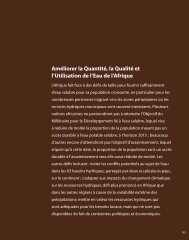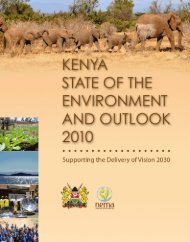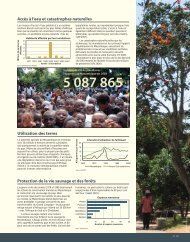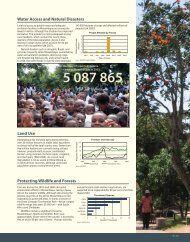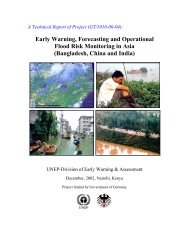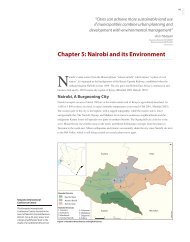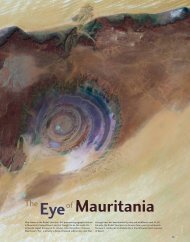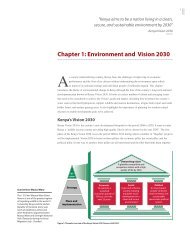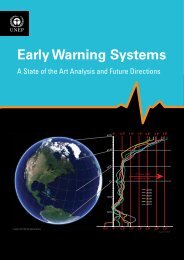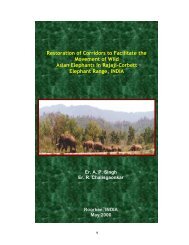Uganda Atlas of Our Changing Environment - GRID-Arendal
Uganda Atlas of Our Changing Environment - GRID-Arendal
Uganda Atlas of Our Changing Environment - GRID-Arendal
Create successful ePaper yourself
Turn your PDF publications into a flip-book with our unique Google optimized e-Paper software.
NEMA community sensitisation on proper wetland management in the Iyamuriro-Mutanda wetland area<br />
the middle and upper slopes as measured on such cultivated<br />
steep slopes. This is similar to the soil loss measured on<br />
cultivated slopes in nearby Rukiga highlands (Bagoora,<br />
1997). Such rates <strong>of</strong> soil loss is intolerable by world<br />
standards.<br />
Consequently, the lakes are increasingly facing threats<br />
<strong>of</strong> demise due to silting from rapidly eroding soils on the<br />
slopes flanking them. Therefore, the lakes are in danger <strong>of</strong><br />
being lost through silting and reduction <strong>of</strong> water storage<br />
capacity, which will have serious implications on the water<br />
resources in this area, both in terms <strong>of</strong> quantity and quality,<br />
and given the added threats <strong>of</strong> climate change. Current<br />
trends indicate progressive shrinkage <strong>of</strong> the lake sizes<br />
through stages, beginning with silting <strong>of</strong> the immediate<br />
shores that are later occupied by swamps which, in turn,<br />
are encroached on and reclaimed for cultivation; a good<br />
example being the expanse swamp fringing Lake Mutanda.<br />
Both silting and encroachment on the lakeshores are<br />
thought to interfere with fish breeding and aquatic<br />
biodiversity in general and has been partly blamed for the<br />
low productivity <strong>of</strong> these lakes. Government in the year<br />
1995 declared the lakeshores and riverbanks as fragile<br />
ecosystems and accorded them special protection through<br />
designation <strong>of</strong> protection zones around lakeshores and along<br />
riverbanks. For example, lakes Bunyonyi and Mutanda have<br />
a protection zone <strong>of</strong> 200 m from the lowest water mark,<br />
where no active landuse practices are allowed without<br />
permission and regulation. There have been daunting<br />
challenges, however, in enforcing this regulation in such an<br />
area with severe land shortage and due other shortcomings<br />
in enforcement. The smaller lakes <strong>of</strong> Murehe, Chahafi and<br />
Kayumba, in order <strong>of</strong> decreasing size, are more vulnerable<br />
to demise from silting due to their size, making their near<br />
future even more grim.<br />
99<br />
NEMA 2006



